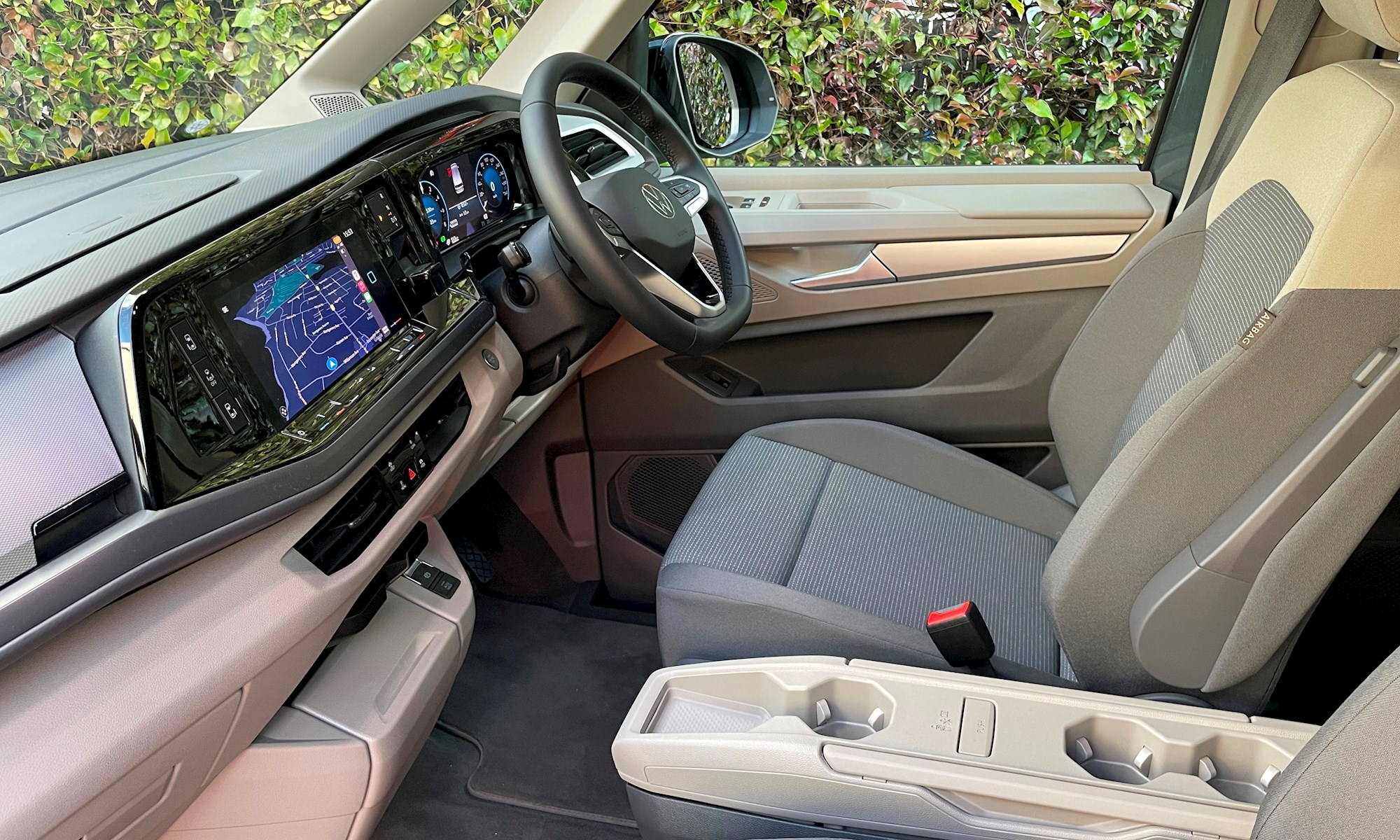Let’s be honest: a gentrified van doesn’t appeal to all family-vehicle buyers in the market for seven seats. Too big, too unrefined or (more likely) too uncool.
That last thing is insurmountable for many, so we’ll take it as read. But as for the rest, may we introduce you to the Volkswagen Multivan 7. It goes some way towards addressing those LCV-related issues: it’s smaller than VW’s Transporter van (if only a little) and a whole lot more refined and sophisticated, because it’s based on the MQB passenger-car platform – same as a Golf or Skoda Octavia.

The Transporter continues, by the way, with a light-commercial focus. There's a new model on the way next year, on a shared platform with the Ford Transit, and it'll remain completely different to the T7.
The new Multivan is also very-2022, because the launch model is a plug-in hybrid electric vehicle (PHEV).
We’ve covered the T7 range already, but what the launch programme didn’t allow us was extended time in the version that’ll appeal most to mainstream buyers: the entry-level Multivan Family, which dips just under the $80k Clean Car Discount cap to liberate a $5750 government rebate for buyers. So here we go.
View all Volkswagen Transporter models on DRIVEN
After the look-at-me two-tone $100k Energetic model, the T7 Family can appear a little underwhelming – especially in the humble grey finish and modest 17-inch wheels of our test vehicle. But there are also plenty of little details, like the flush grille section and layered tailgate, that tell you this is a new-gen VW. More fashion-forward colours are also available: bright blues, orange and even brown (sorry, Copper Bronze).

The PHEV powertrain will be a draw for many, and it works nicely. It’s borrowed from the Skoda Octavia iV, 1.4-litre turbo-petrol engine and 13kWh battery giving a claimed 50km range (WLTP-4P figure).
Real-world it’s more like 40km, based on our week. Admittedly not a lot in these days of Mitsubishi Outlanders that can do 80km-plus, but it’s still okay for the daily commute. And it’s still a pretty thrifty hybrid even when the battery is spent.
Not always an entirely smooth one, though. It’s perky enough with 160kW/350Nm (less than the Skoda’s 180kW/400Nm), but when you’re running in hybrid mode and there’s a lot of throttle modulation going on – in the urban crawl, for example – you’ll occasionally get a bit of a thunk through the transmission as the powertrain switches modes. We noticed the same thing in the Octavia iV.

As with the Skoda, we like the on-screen PHEV control menu, which allows you to easily specify what state of charge you want to have – so you can choose to use the battery up first, maintain it or even charge it with the petrol engine (during gentle motorway driving, for example).
It’s a still a relatively long, tall machine, but we honestly didn’t find it too much of an issue in city driving and parking. The beauty of a van is that you sit high and the sides are pretty straight, so you can place it accurately in tight spaces. No 360-degree camera in the T7, but there’s one at the rear with a nice crisp display.
That surround camera, or lack of, is one little hint that VW NZ has had to be circumspect about the equipment in the Family to keep it under $80k. One thing we do miss is adaptive cruise, which will be in the $96,500 Life model when it arrives and is also standard on the Energetic. It’s a bit of a must-have for an $80k vehicle and the tech works especially well with EVs. Shame.

Otherwise the Family is really well kitted out with active safety gear, including Lane Assist and Autonomous Emergency Braking with pedestrian and cyclist recognition. Generally pretty high-tech right down to all-digital instrumentation and wireless phone projection, although some of VW’s new-gen touch controls take a lot of getting used to. Physical buttons are so… vanny, right?
It’s good to drive – like, car-good – but the genius of a vehicle like this is the vast and versatile space. The five rear chairs be slid and repositioned any which way, although you can’t actually drive with the second and third rows face-to-face like you can in the high-end Transporter models, because the seatbelts are anchored on the pillars rather than the seats themselves.
But it’s a joyous way for occupants to travel, with all the room in the world and the ability to mix and match passenger and cargo needs all you like, because each seat is individually mounted. Power operation for the side doors too, although not the hands-free “kick” of the higher-end models.

The loading lip at the back is ridiculously low and the cargo space can of course be ridiculously large if you need it to be. With seven seats in place you still get 469 litres (similar to a medium SUV) and with the third row removed (so it’s still a five-seater) there’s a cavernous 1844 litres. Beyond that, you truly do just have the carrying capacity of a van.
You’ll already know whether all of this is enough to make you ditch that top-spec SUV. But we’d offer just one thought regarding the cool-factor: everybody seems to love a VW van, so you’re covered there too.
VOLKSWAGEN T7 MULTIVAN
ENGINE: 1.4-litre turbo-petrol four with 13kWh plug-in battery and single electric motor
POWER: 160kW/350Nm
GEARBOX: 6-speed automated dual-clutch, FWD
CONSUMPTION: 1.1l/100km, EV range 50km (3P-WLTP)
PRICE: $78,800













